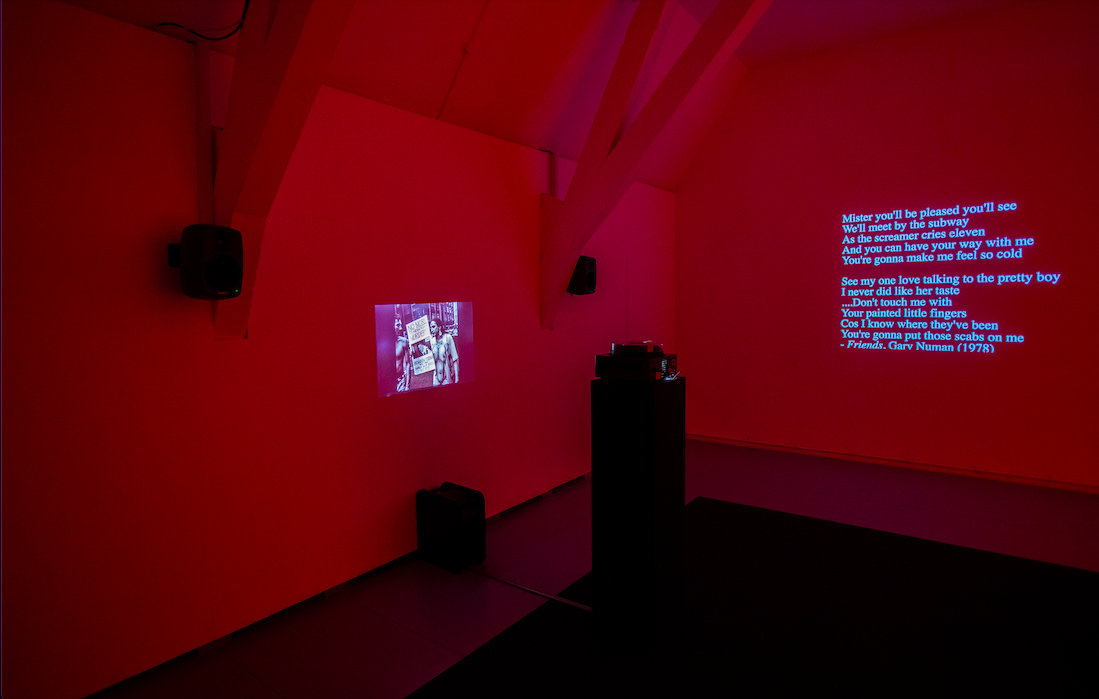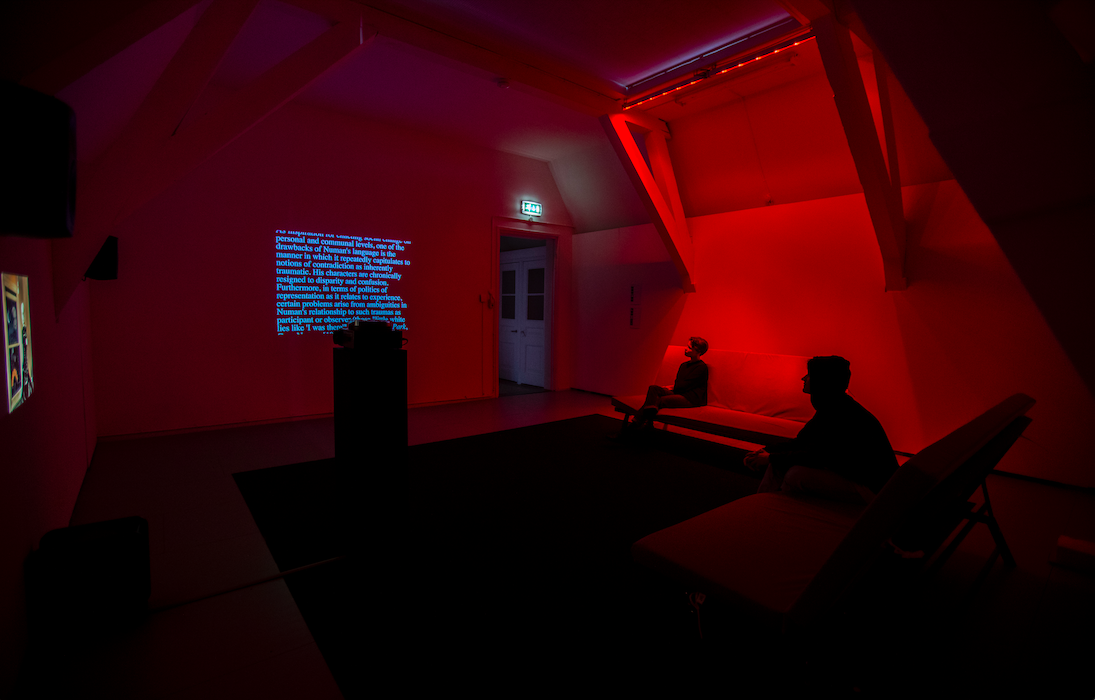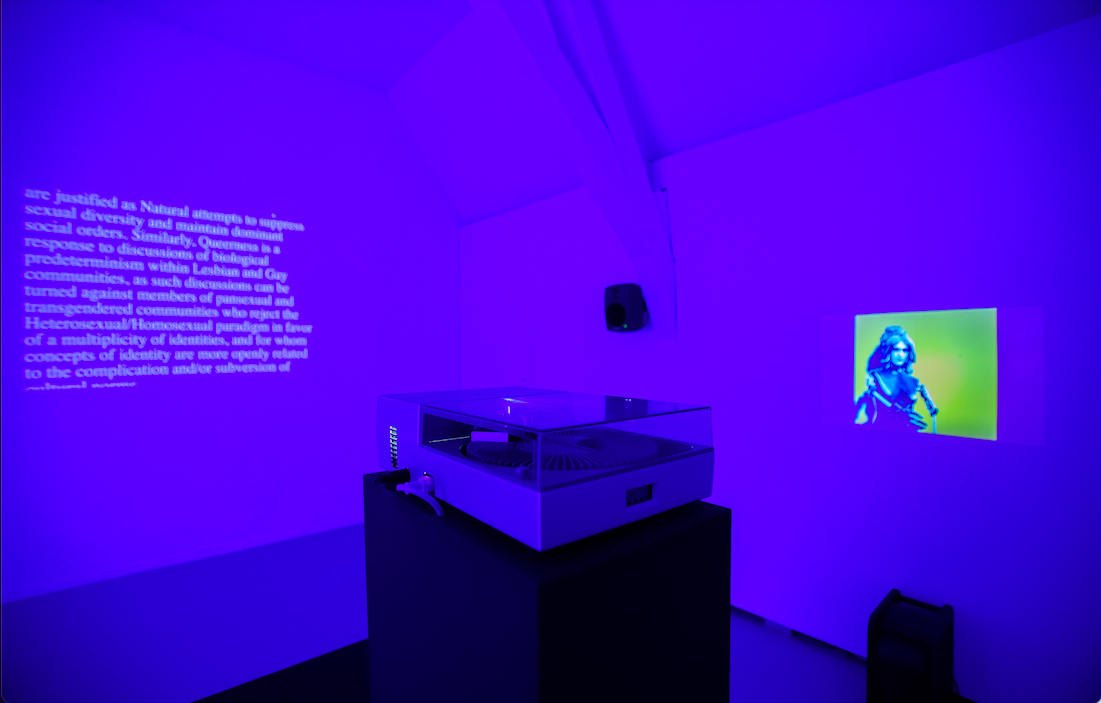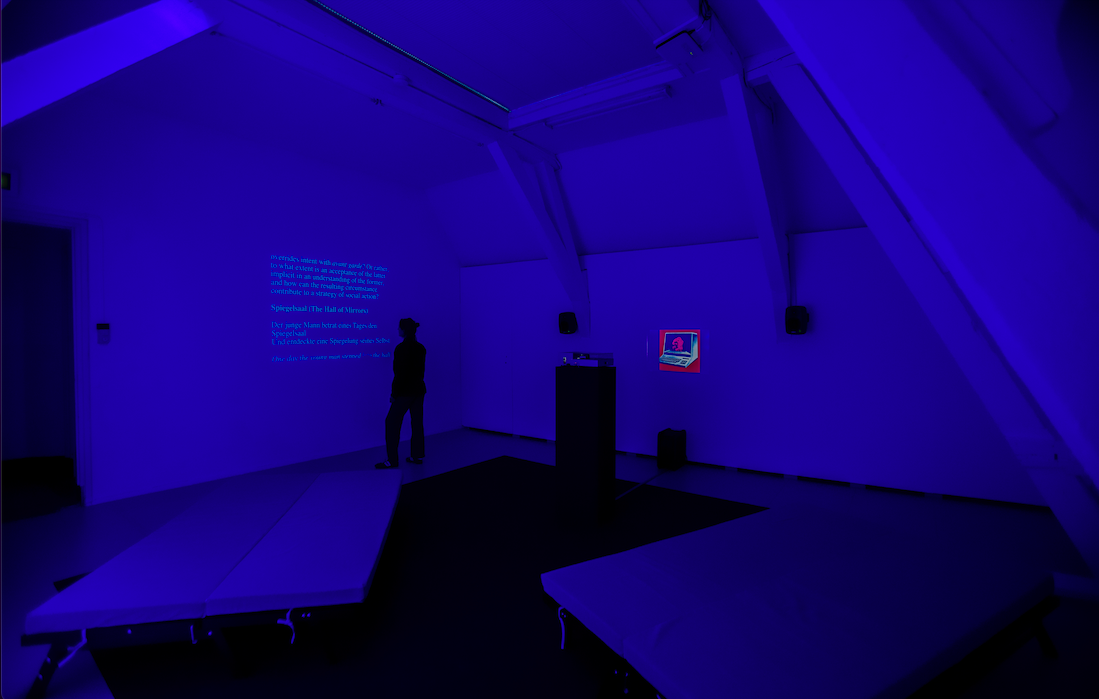Two Rubatos




Solo exhibition by Terre Thaemlitz, Japan-based multimedia producer, writer, public speaker, educator, audio remixer, DJ and owner of Comatonse Recordings
Japan-based artist Terre Thaemlitz has worked in sound, performance, and on multimedia albums and installations for over thirty years. In 1997 and 1999 respectively, Terre Thaemlitz produced two albums featuring piano renditions in tempo rubato of music by techno-pop group Kraftwerk and electronic-pop musician and producer Gary Numan. The renditions are characterized by open-meter improvisation – rubato, a musical performance that does not adhere to a strict sense of time – and computer-aided composition. The piano itself is digitally processed with improvisations stepped in across the musical notes, along with distorting noise and flooding resonance to cloud the identification of the original tracks. Each album was accompanied by image parodies of the original artists’ cover art and extensive analytical essays. All of this goes towards Thaemlitz’s contribution to a sonic discourse of interpretation and queer production of meaning across these musician’s techniques and thematics as well as her own.
Die Roboter Rubato (1997) references one of Kraftwerk’s most famous songs “Die Roboter“ (“The Robot”), and how their representation as robots has become symbolic of the group. Thaemlitz casts their recurrent themes of identity and post-industrial technologies as heteronormative processes of objectification and fetishization of gendered machines. In rejection of Kraftwerk’s infamous The Man Machine, Thaemlitz ponders the cultural necessity and potential of a “femme machine.” With Replicas Rubato (1999), Thaemlitz traces “the lie of sexual identity” and its material and non-material “truth of essence” (i.e. being “born this way”) by discussing the queer thematics of Gary Numan’s music, and his ambiguous sexuality. Replicas was the name of the second album by the band Tubeway Army, which was fronted by Gary Numan and considered to mark the beginning of Numan’s transmutation with machine and androgynous representation. The installations of Die Roboter Rubato and Replicas Rubato feature Thaemlitz’s distorted and cloudy piano solos that strain the melody recognition process and presented for the first time are original 35 mm images that were projected in her performances. The associated essays written by Thaemlitz ensure that meanings are not lost to poetic vagary.
The rubato works are as much about the interpretative process of being a listener/reader and publicly contributing to sonic discourse on legibility as they are about the private desires and limitations of Thaemlitz’s own commentary and construction of “alternate truths” through messy contradictions and hypocrisies. Thaemlitz demonstrates what the work of referentiality and critique can do, identifying analysis as a kind of performative play that the spectator does, implicating them in cultural production through their consumption of texts, images, sounds, and asking what action to take next.
Japan-based artist Terre Thaemlitz has worked in sound, performance, and on multimedia albums and installations for over thirty years. In 1997 and 1999 respectively, Terre Thaemlitz produced two albums featuring piano renditions in tempo rubato of music by techno-pop group Kraftwerk and electronic-pop musician and producer Gary Numan. The renditions are characterized by open-meter improvisation – rubato, a musical performance that does not adhere to a strict sense of time – and computer-aided composition. The piano itself is digitally processed with improvisations stepped in across the musical notes, along with distorting noise and flooding resonance to cloud the identification of the original tracks. Each album was accompanied by image parodies of the original artists’ cover art and extensive analytical essays. All of this goes towards Thaemlitz’s contribution to a sonic discourse of interpretation and queer production of meaning across these musician’s techniques and thematics as well as her own.
Die Roboter Rubato (1997) references one of Kraftwerk’s most famous songs “Die Roboter“ (“The Robot”), and how their representation as robots has become symbolic of the group. Thaemlitz casts their recurrent themes of identity and post-industrial technologies as heteronormative processes of objectification and fetishization of gendered machines. In rejection of Kraftwerk’s infamous The Man Machine, Thaemlitz ponders the cultural necessity and potential of a “femme machine.” With Replicas Rubato (1999), Thaemlitz traces “the lie of sexual identity” and its material and non-material “truth of essence” (i.e. being “born this way”) by discussing the queer thematics of Gary Numan’s music, and his ambiguous sexuality. Replicas was the name of the second album by the band Tubeway Army, which was fronted by Gary Numan and considered to mark the beginning of Numan’s transmutation with machine and androgynous representation. The installations of Die Roboter Rubato and Replicas Rubato feature Thaemlitz’s distorted and cloudy piano solos that strain the melody recognition process and presented for the first time are original 35 mm images that were projected in her performances. The associated essays written by Thaemlitz ensure that meanings are not lost to poetic vagary.
The rubato works are as much about the interpretative process of being a listener/reader and publicly contributing to sonic discourse on legibility as they are about the private desires and limitations of Thaemlitz’s own commentary and construction of “alternate truths” through messy contradictions and hypocrisies. Thaemlitz demonstrates what the work of referentiality and critique can do, identifying analysis as a kind of performative play that the spectator does, implicating them in cultural production through their consumption of texts, images, sounds, and asking what action to take next.